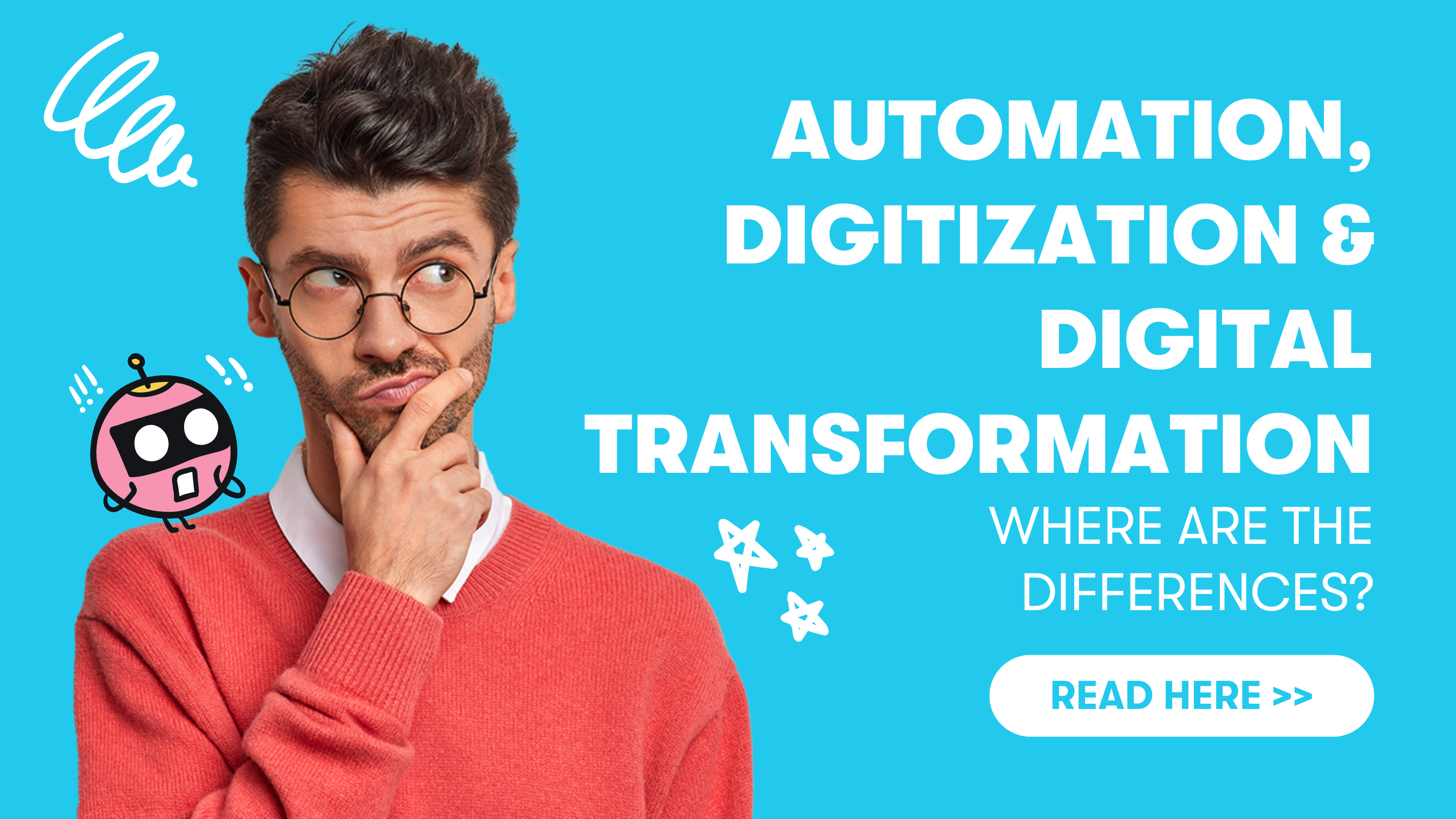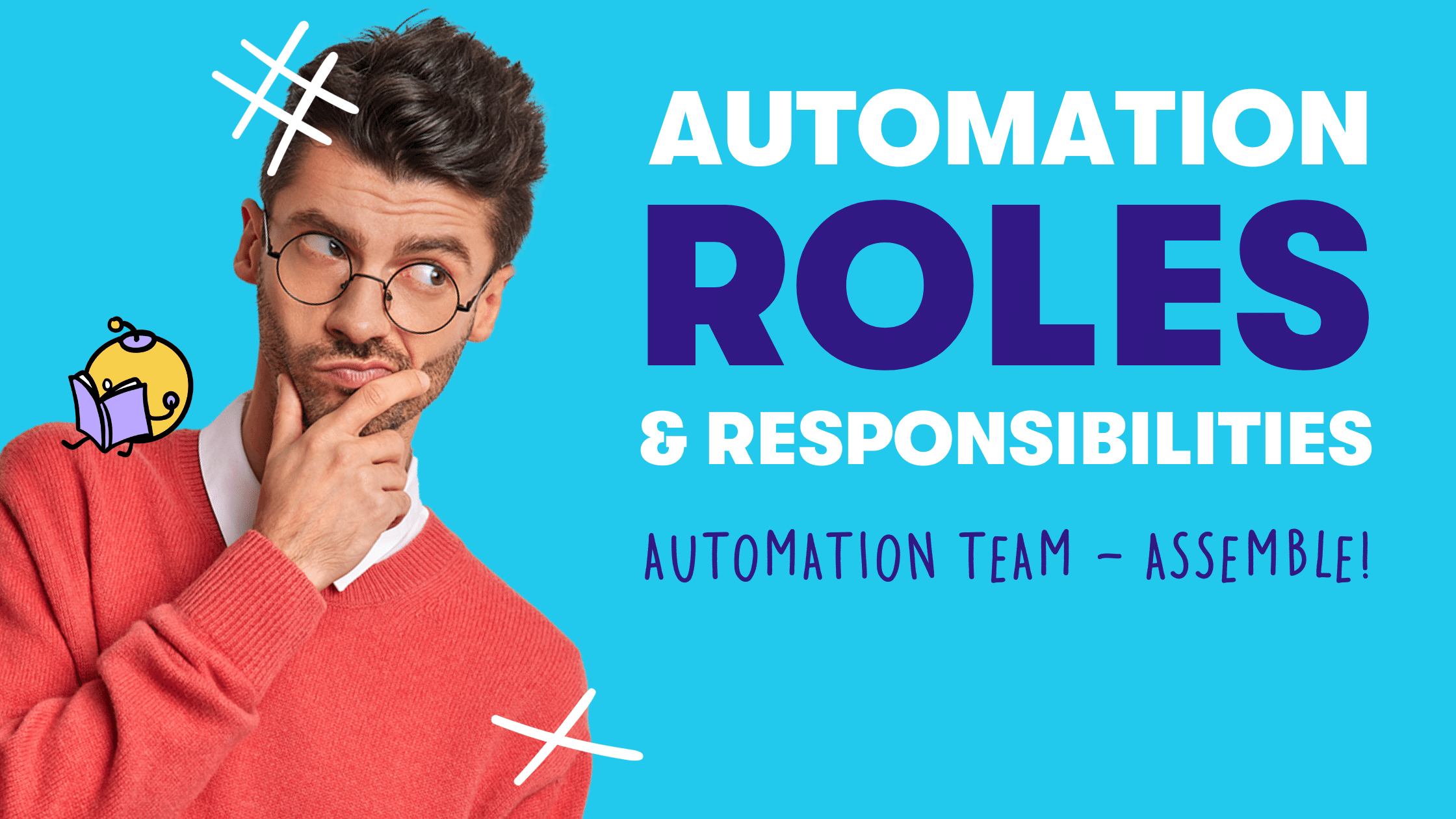Digitize, automate, digitally transform: One and the same? According to half of the companies surveyed in a 2018 Bitkom study, apparently yes. 50 percent of the companies associate the term "digitization" with the "automation of operational business processes". But this is a fallacy - the three terms are fundamentally different and pursue different approaches.
In the following, we have deliberately chosen a narrow concept of digitization in order to highlight the differences between the terms more clearly. In many discussions, the terms digitization, digital transformation and innovation are used synonymously. Thus, for example, digital competence models often go beyond their actual meaning. By digitization, we then also mean new ways of working, business models or new ways of thinking. We would then call this digital transformation. But that's what we'll talk about again at the end of the article - so stay tuned.
Digitization: From analog to digital
Digitizing initially means nothing more than converting analog data into digital data. For example, scanning paper documents from folders and managing them digitally, or using special programs to read information from analog forms and save them on the server. Today, the majority of companies have digital archives. Documents should not only be available digitally, but should also be systematically organized.
An example: An order letter is scanned and stored digitally. A program reads out important data: Address, items ordered, scope of delivery, client, etc. This data is then stored in digital archives. Employees can retrieve the information digitally and use it for the delivery process, for example, manually transferring the ordered products to a delivery bill or copying the contact data to an invoice.
Digitizing a company means restructuring information storage and using technologies to provide data in digitized form.
Automation: Streamline digital processes
Digitization and automation are often regarded as a single entity or even erroneously used as synonymous terms. The fact is, however, that process automation is only conditioned and enabled by digitization, as more complex IT structures are created due to the newly acquired data volumes. Digital processes can thus quickly become confusing, small-scale and error-prone, especially if they have to be operated manually.
Process automation helps to use the abundance of digital data and applications efficiently. Processes are thus streamlined and a company can work more cost-effectively thanks to automation. Simple, repetitive and monotonous tasks are taken over by RPA bots or iPaaS solutions, for example, while employees can concentrate on the core business.
Back to our example: If the order data is now available digitally, employees will no longer have to process it manually in the future. Bots can read the documents, compare the information and automatically initiate the next steps. For example, sending the appropriate product order to the warehouse, printing delivery bills or creating an invoice. The order can be processed more efficiently and error-free in an automated workflow. This saves employees time for more important tasks.
Digital transformation: Creating new technologies
Digital transformation now goes even further, not only streamlining processes to make them more efficient; it calls their very existence into question. Digital transformation means changing technologies and developing them further in innovative ways.
Groundbreaking steps in digital transformation include data storage in clouds or blockchain technology, for example. It is therefore a social, disruptive change and not just a reaction to existing processes that are to be improved. For example, fax became email and email became messenger apps.
To stay with our example, instead of storing analog writing or emails digitally and pushing them later with the help of process automation, a company could develop a completely new method of order creation and become a pioneer in the industry. For example, develop a proprietary app with a new, unprecedented technology that makes the previous process obsolete.
The challenge of digital transformation is about developing innovative solutions and creating completely new processes.
Digitization as the basis for digital transformation & automation
Although digitization, automation and digital transformation are fundamentally different, they are closely linked. Digitization provides digital data for processes that can later be automated. And on the basis of previously existing processes, completely new ones can ultimately be created. So anyone who wants to digitally transform or automate first needs solid digitization as a basis.









